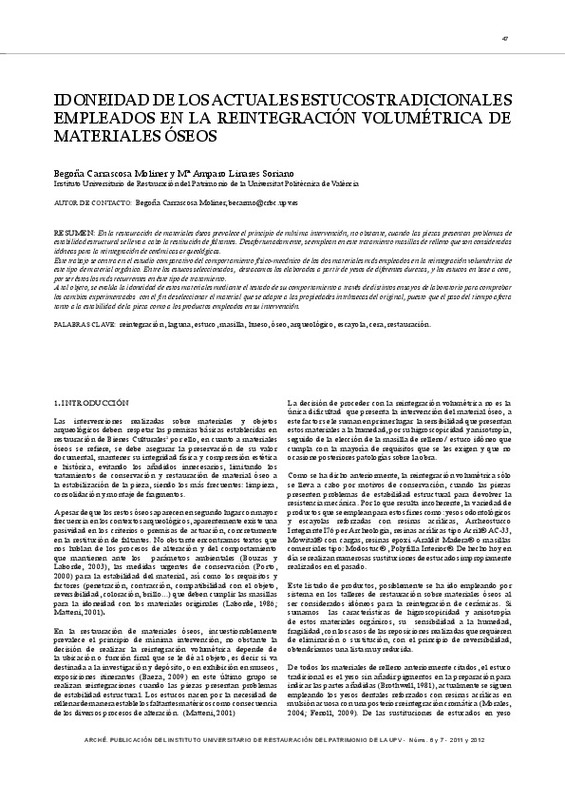JavaScript is disabled for your browser. Some features of this site may not work without it.
Buscar en RiuNet
Listar
Mi cuenta
Estadísticas
Ayuda RiuNet
Admin. UPV
Idoneidad de los actuales estucos tradicionales empleados en la reintegración volumétrica de materiales óseos
Mostrar el registro completo del ítem
Carrascosa Moliner, MB.; Linares Soriano, MA. (2011). Idoneidad de los actuales estucos tradicionales empleados en la reintegración volumétrica de materiales óseos. Arché. (6):47-54. http://hdl.handle.net/10251/33047
Por favor, use este identificador para citar o enlazar este ítem: http://hdl.handle.net/10251/33047
Ficheros en el ítem
Metadatos del ítem
| Título: | Idoneidad de los actuales estucos tradicionales empleados en la reintegración volumétrica de materiales óseos | |
| Otro titulo: |
|
|
| Autor: | ||
| Entidad UPV: |
|
|
| Fecha difusión: |
|
|
| Resumen: |
En la restauración de materiales óseos prevalece el principio de mínima intervención, no obstante, cuando las piezas presentan problemas de estabilidad estructural se lleva a cabo la restitución de faltantes. Desafortunadamente, ...[+]
In the restoration of bone material the minimum intervention principle prevails, however, when pieces show problems of structural stability gap filling is required. Unfortunately, in this treatment fillers that are considered ...[+]
|
|
| Palabras clave: |
|
|
| Derechos de uso: | Reserva de todos los derechos | |
| Fuente: |
|
|
| Editorial: |
|
|
| Tipo: |
|







